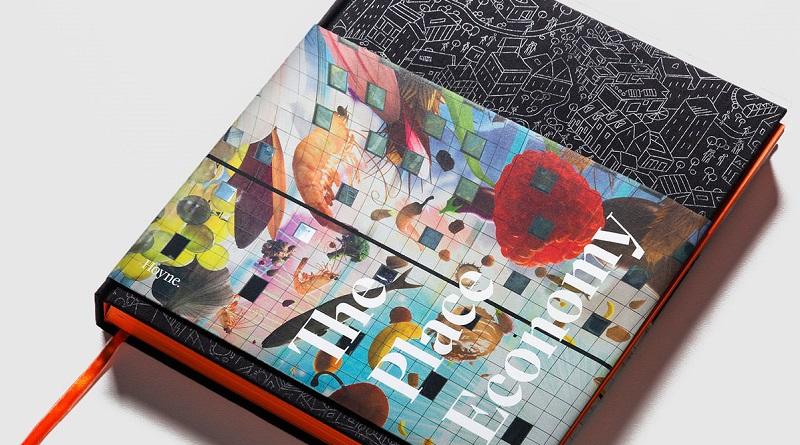Perhaps the greatest misunderstanding among those involved in place branding is to think of it as a challenge of coming up with a catchy slogan, tagline and visual brand identity for a city, region or destination. Approached this way, place branding work is doomed to fail. For place branding to work and leave a lasting (ideally positive) impression, it needs to go hand in hand with placemaking.
Placemaking is what Andrew Hoyne‘s new book, The Place Economy, is all about. Andrew – who is the Creative Director and Principal of Australian brand consultants Hoyne Design, has worked in and around the Australian property sector for 25 years. A leading placemaking thinker and strategist, Andrew’s work is driven by the belief that we need to invest money, intelligence, imagination, craftsmanship and emotion into our cities and suburbs to maintain our quality of life.
What makes The Place Economy special and worth reading?
In The Place Economy, Andrew Hoyne examines how to create better places for a better future, and how effective – or holistic – placemaking can lead to real world social and economic benefits, not just financial gains for investors.
Through insights, case studies and research from throughout the world, The Place Economy aims to demonstrate how best practice placemaking around the globe can boost better, healthier living standards as well as bottom lines.
Similar to the mission of The Place Brand Observer, the book seeks to connect ideas and to build bridges across disciplines which should, but often don’t collaborate as closely as needed. It brings together leading thinkers in architecture, urban planning, property development, emotional and physical health, sustainability, philosophy and more via original essays, interviews, articles case studies, illustrations and photography.
But The Place Economy is not just a Hoyne project. Many acclaimed local and international contributors have added their voice to it, including: Sacha Coles (Aspect Studios), Michelle Weiss (Sydney Harbour Foreshore Authority), Adrian Mc Gregor (McGregor Coxall), Dr Stanley Quek (Frasers Property), Mike Day (RobertsDay), Philip Vivian (Bats Smart), Berry Liberman (Small Giants), Tim Campbell (Lendlease), David Allt-Graham (MAB), Marcus Westbury (Renew), Clover Moore (Lord Mayor of the City of Sydney), Sue Thompson (UNSW), Eamon Waterford (Committee for Sydney), Bruce Mills (Parramatta City Council), Professor Shirley Alexander (UTS), Professor Roy Green (UTS), Yvonne Lynch (City of Melbourne), Ian Dryden (City of Melbourne), Dr Kate White (Heart Foundation), Professor Billie Giles-Corti (University of Melbourne), Professor Edwards Blakely (University of Sydney), Bob Perry (Scott Carver), Professor Adrian Franklin (University of Tasmania), Stephen Crafti, John Suckling (Re:START), Dr Kee Yeon Hwang (Hongik University), Winy Maas (MVRDV), Richard Hassel (WOHA Architects) and Ed Uhlir (Chicago Millenium Park Foundation).
What we like most about this book
Apart from the think pieces with a strong emphasis on calling for more livability and sustainability, we found the placemaking case studies especially intriguing. This book really is a unique opportunity to learn about successful urban and property developments in Seoul, Melbourne and Sydney, Singapore, Rotterdam, Chicago, Christchurch and Auckland in New Zealand, Newcastle and Parramatta in Australia, Copenhagen and the award-winning MONA – Museum of Old and New Art – in Hobart, Tasmania.
A highlight for place branding aficionados: Andrew Hoyne’s essay on the importance and meaning of place branding (Chapter 4, page 164), in which he discusses why it takes a meaningful brand, not a mere logo, to help build a village. His observation: “Branding (or re-branding) can create a sense of belonging and purpose from very early on”.
We also very much enjoyed learning about placemaking from a distinctively Australian perspective.
Who should buy this book?
Unlike Bill Baker‘s handy and instructive How-to pocket-book, Destination Branding for Small Cities, The Place Economy print version comes in large format, hard cover and quite heavy. Its high-end packaging and design make it an ideal gift for colleagues or friends interested in placemaking. As invaluable source of information and inspiration, The Place Economy should be within arm’s reach of any professional seriously engaged in the brand development or management of cities, regions or destinations. It certainly won’t leave from our table.
How to buy
This book is not for profit. 100% of proceeds go to help Habitat for Humanity, who provide appropriate housing solutions in sustainable communities. The charity was established with the belief that the foundations of the future lie in giving families the opportunity to be healthier, happier and more secure.
Price per unit: 200 Australian Dollars (100 AUD for students). More about the book here.
You might also be interested in our list of recommended books for place brand professionals.


